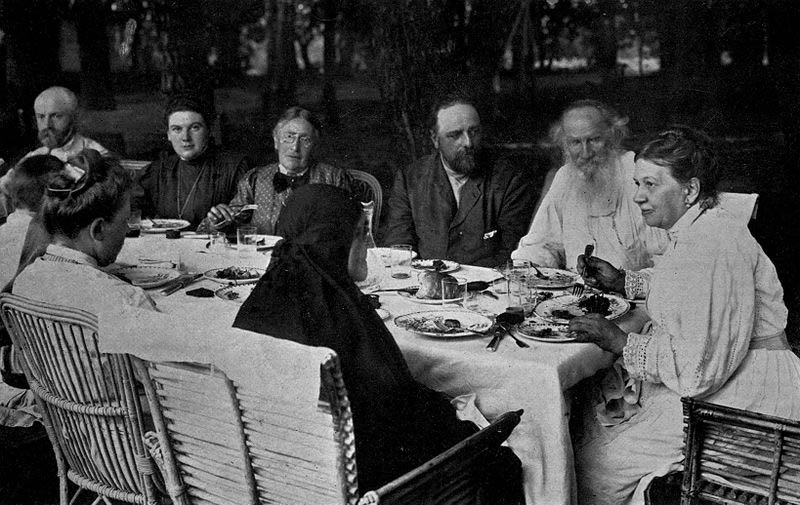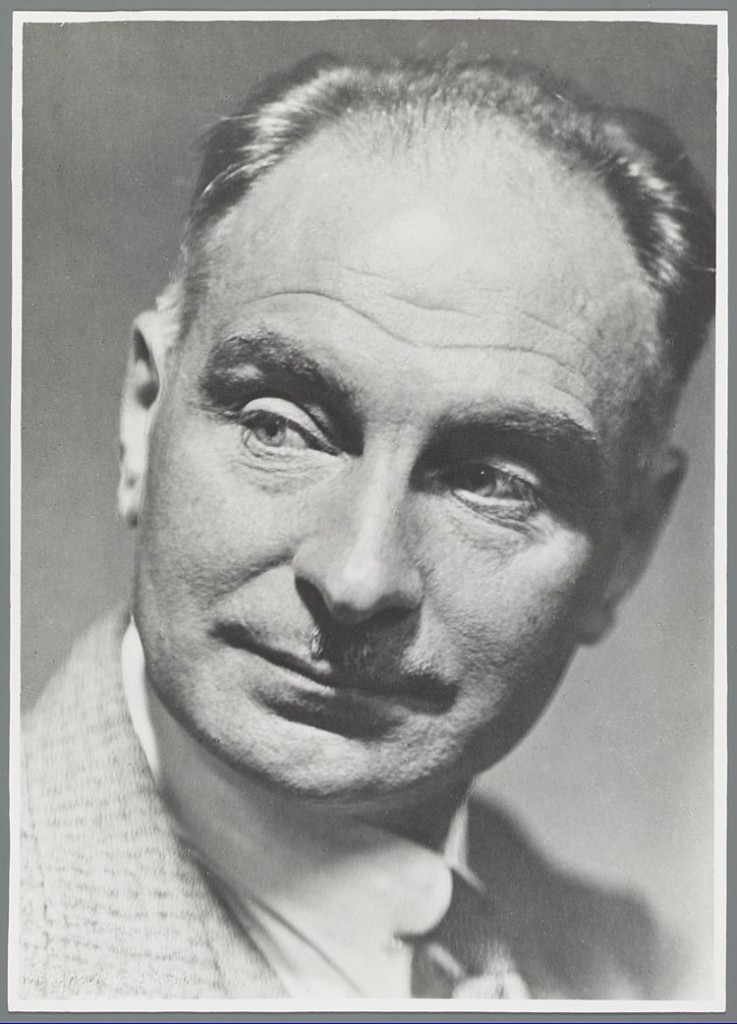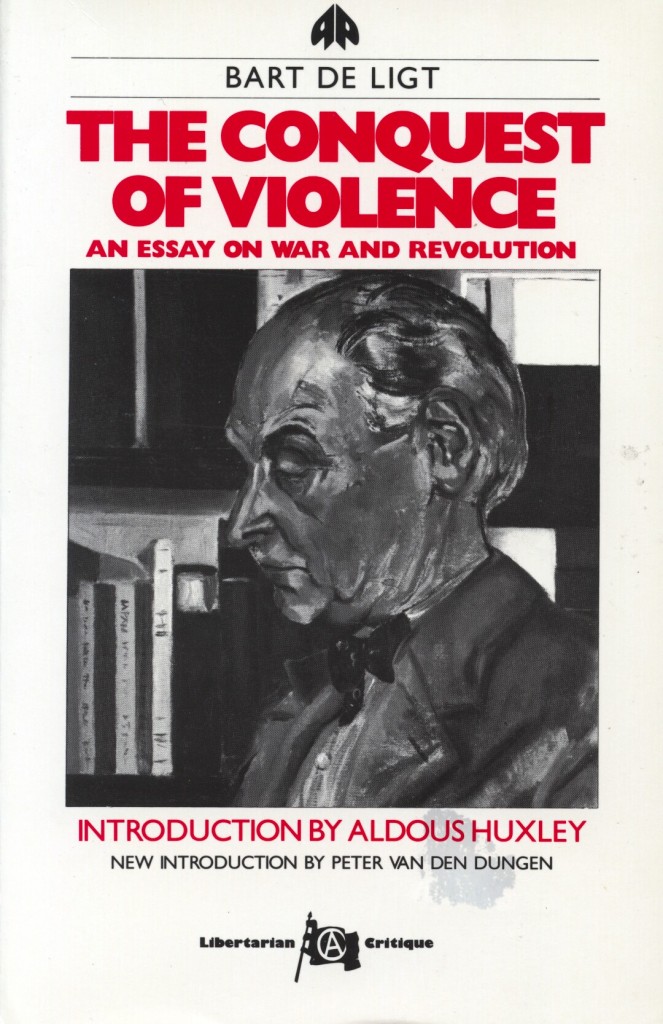Statement of Purpose
The Dutch pacifist BART DE LIGT (1883-1938) was pastor of the Reformed Church at Nuenen, Netherlands, where Vincent van Gogh’s father had been pastor 25 years before. He was a member of the League of Christian Socialists, and founder of the International Anti-Militarism Bureau. At a meeting of the War Resisters’ International in 1934, he presented his famous “Plan of a Campaign Against All Wars and Preparation for War”, which took a firm stand against fascism and Nazism. The full text was included in The Conquest of Violence (1937, with an Introduction by Aldous Huxley), one of the earliest and still one of the most important interpretations of Gandhian nonviolence. See especially Bartolf’s article (below) for a summary of de Ligt’s life and work.
by Christian Bartolf
Four times Gandhi offered his services to the army: in 1899-1900 during the Boer War, in 1906 on the occasion of the so-called Zulu Rebellion, in 1914 during his stay in London at the outset of World War I; and lastly in India in 1918 near the conclusion of that war. After World War I Gandhi on a number of occasions was asked how he could reconcile his participation in war with his principle of nonviolence (ahimsa). Bart de Ligt was not the only person to correspond with Gandhi on this issue, but he was the most forthright and compelling. Leo Tolstoy’s friend and secretary, Vladimir Tchertkov, had also questioned Gandhi about it. In fact, it was a common reverence for Tolstoy’s doctrine of non-resistance or non-violent resistance that was the foundation for the critical dialogue between Bart de Ligt and Gandhi between 1928 and 1930. As an introduction to this correspondence, we shall first summarize Gandhi’s participation in various wars, and the exchanges of letters and conversations, which Gandhi had on this matter, including his dialogue with Bart de Ligt.(1)
Read the rest of this article »
In the years immediately following World War I, Western pacifists were seeing with alarming clarity the possibility of another war, and speaking out with increasing urgency against militarism. Having suffered through the trauma of appalling destruction, pacifist writing in the 1920s and 1930s has the aura of a survival myth. The advent of Gandhian satyagraha presented pacifists with a possible strategy for averting tragedy, as an antidote to war, and moved Bart de Ligt to write publicly and openly to Gandhi, to enlist him in the pacifist cause. Gandhi’s nonviolence was never a fixed principle; was ever evolving. The Salt March of March 1930, which some see as pivotal to the development of Gandhian nonviolent resistance, had not yet taken place when these letters were published. On the one hand, there are pacifists determined to staunch the advent of another daimonic war, and on the other hand there is Gandhi in a death struggle with the British for Indian independence, his nonviolence, by his own admission, imperfect. De Ligt’s call for Gandhi to reject war, to commit satyagraha to the ending of war was a prophetic call. [JG]
Letter One: Bart de Ligt to Gandhi; May, 1928.
Most venerated Gandhi:
Without doubt, there is no man who attracts the attention of the modern world as you do. And you are certainly worthy of this admiration because you have been able in a wise, heroic way to awaken everywhere confidence in that moral force which slumbers in each individual. To oppose the severe oppression of so-called Christian civilization, and the violence of proud and pretentious Westerners, you have awakened in the East immense spiritual forces, making it seem that Christ reigns over your “pagan” world rather than in our official Christian churches. You have not only proclaimed the gospel of non-resistance — or spiritual warfare — but you have yourself practiced it and have paid with your own person.
Read the rest of this article »

Tolstoy family gathering, 1905; Tchertkov to Tolstoy’s right; photographer unknown.
My article, “My Attitude Towards War”, published in Young India, 13th September 1928, has given rise to much correspondence with me and in the European press that is interested in war against war. In the personal correspondence there is a letter from Tolstoy’s friend and follower, V. Tchertkov, which, coming as it does from one who commands great respect among lovers of peace, the reader will like me to share with him. Here is the letter:
Personal Letter from Vladimir Tchertkov
Your Russian friends send you their warmest greetings and best wishes for the further success of your devoted service for God and men. With the liveliest interest do we follow your life, the work of your mind, and your activity, and we rejoice at each of your successes. We realize that all that you attain in your own country is at the same time also our attainment, for, although under different circumstances, we are serving the one and the same cause. We feel a great gratitude to you for all that you have given and are giving us by your person, the example of your life, and your fruitful social work. We feel the deepest and most joyous spiritual union with you.
Read the rest of this article »
by Bart de Ligt
From Germany, Austria and other countries, I have been urged for information about my correspondence with Gandhi, which so far has only been published in French, English and Dutch and for various reasons could not be published in German. I am therefore most grateful to the editorial staff of Neue Generation (New Generation) for the opportunity to acquaint you with a few matters.
It was only in 1928 that I could really go more profoundly into Gandhi’s life. I had read, of course, with great interest a number of his articles. As well as that, I had taken note of various articles written about him. The most important insights I owe to the short book by Romain Rolland (Mahatma Gandhi, 1922) and a few articles published in magazines.
From these I came to understand Gandhi as the legitimate follower of Tolstoy. Whereas Tolstoy would have been the “John the Baptist” of revolutionary nonviolence, Gandhi would have been the Christ, so to speak, of this movement; Tolstoy the Great Precursor and Prophet, Gandhi the Performer fulfilling the Prophecy.
Read the rest of this article »
by Bart de Ligt
At the Congress of War Resisters, held in Lyons, August 1931, Tolstoy’s last secretary, Valentin Bulgakov spoke of the “great experience” gained by India in its struggle against England. Not without reason did he express admiration for the role Gandhi played in this struggle. But Bulgakov tended to attribute to the Mahatma an attitude that was consistently hostile to any sort of violence, an attitude which, according to Gandhi himself, does not correspond with the facts.
In Le Semeur of October 15th, 1931, Bulgakov also declared that the correspondence which Vladimir Tchertkov and I have had with the Indian leader, regarding Gandhi’s attitude during the Boer War, the Zulu-Natal War and the World War, concerns only “a few ill-advised declarations” of Gandhi, “purely accidental” and remaining “without effect; Gandhi’s actions demonstrating that he in no way approves of cooperation with violence.”
Read the rest of this article »
by Richard Gregg
Those who are familiar with Gandhi’s life will recall that up to 1919 he believed that the British Empire did more good than harm to the world and to India. He had not then evolved his program of hand spinning and weaving, nor in his South African struggles had he used the boycott or refusal to pay taxes as political weapons. He has stated that up to that time he did not have strength to resist war effectively.

Richard Gregg, c. 1930s, photographer unknown; courtesy Quakers in the World.
Therefore, I think that he did war service because up till then he did not realize the extent of violence and untruth inherent in the State; he did not fully understand the complex and subtle nature of its control over people; and had not yet devised practical methods of ending that control. Nevertheless, he knew that war is only a result, a final stage of a psychological process that begins with fear, anger and greed. In organized social life most of us support the State by paying taxes, by buying articles from people or corporations that similarly support the State, and by not effectively helping others to escape this domination. To refuse military service after taking part in all this is merely to lock the stable door after the horse is stolen. Gandhi seems to have preferred to take some part in war to see if somehow he could render good for evil. Innocent or inconsistent perhaps, but with deeper understanding than that of most.
Read the rest of this article »
by Peter van den Dungen

Bart de Ligt c. 1935; Public domain image; photographer unknown; courtesy of International Institute for Social History.
On 3 September 1938, within a year of the publication of The Conquest of Violence (his only book translated into English), Bart de Ligt collapsed and died in the railway station at Nantes. He had been taken ill in Bretagne and was on his way home to Geneva. Only 55, he had led such an intensively active public life, fully dedicated to the struggle for a better society, that this time his exhaustion proved to be fatal. His wife, who was his close collaborator, said that his life was like a flame, which had been extinguished too soon. But it had been a brilliant flame which had illuminated the thoughts, warmed the feelings, and lit or fanned the fervour of all those who had the good fortune to come into contact with him either directly through his countless public lectures, speeches and organisational activities, or indirectly through his equally numerous publications. It may be regarded as symbolic that he died in Nantes, the city where Henry IV signed the Edict granting freedom of conscience and worship to the French Protestants (who had been killed in their thousands in the St Bartholomew’s Day Massacre of 1572 and afterwards), for de Ligt was a fighter of all dogma, whether religious or secular, and a fearless defender of all those who, in the past as in his own day, were branded heretics. Being a chief among them, he conducted his own kind of inquisition which was one relentless exposition of, and opposition to attitudes, practices and institutions which resulted in the enslavement of the individual and the establishment of a society which was far from truly human.
Who was this iconoclast who likeminded contemporaries regarded as a ‘superior spirit’ and an ‘exceptional figure’ in Dutch intellectual life? The relatively few people, then as now, in Holland and abroad, who know and admire de Ligt’s social philosophy and social action – against war and all the things which make for war – saw him as a figure bearing comparison with Erasmus, whom he resembled in several ways, and whose biography, published in Dutch in 1936, was his last book.
Read the rest of this article »
by Bart de Ligt
We would do well to situate in an historical context not only this far-ranging essay by the Dutch anarcho-pacifist Bart de Ligt (1883-1938) but Gandhi’s writings as well. It is easy to lose sight of the international foment at the time of Gandhi’s nonviolent campaigns in South Africa and India, and to disregard the intensity of the contemporary discourse on peace and war in Europe and the United States. By the mid 1930s when de Ligt published this essay in his book The Conquest of Violence, a devastating World War I had ended only a few years before; the rise of Nazism alarmingly threatened the outbreak of another. The debate over militarism versus Gandhian nonviolence has here the air of a struggle for survival and informs de Ligt’s essay with a sense of passion and urgency. It goes a long way to explain why he is so comprehensive in mentioning the views of thinkers whose philosophies were compatible with aspects of nonviolent resistance. The nonviolent boycott and labor strike were well-established methods that might be used in the service of peace. De Ligt knew that Gandhi did not conceive of Satyagraha in a vacuum, nor was it ever isolated on some higher plane from contemporary life. Satyagraha was ever at the heart of historical engagement, a life force that might be marshaled against the force of war.

Pluto Press edition; illustration by Ingrid van Peski-de Ligt; courtesy of J. E. de Ligt.
Concerning his Satyagraha campaign in South Africa, Mohandas Gandhi wrote, “Non-violence is the law of our species as violence is the law of the brute. The spirit lies dormant in the brute and he knows no law but that of physical might. The dignity of man requires obedience to a higher law—to the strength of the spirit.”
How much more noble non-violent methods of struggle are than violent, and how much more effective, when they are well prepared!
Despite the justice of its cause, the religious fanaticism of its people, its famous marksmen, and a strategic geographical position the Transvaal was unable to hold out against the brutality of British imperialism. In the Transvaal in the early 1900s there lived a group of Hindu immigrants subject to harsh and special laws, which shackled them socially and economically and were profoundly offensive to their human dignity. Indian coolies were employed in the mines of Natal and elsewhere in South Africa, and they were tied to their work by five-year contracts. As a rule, they were very industrious. A great number of Indians, once their contracts had expired, stayed behind in the country as small farmers or tradesmen. By 1900 there were 12,500 Indians in the Transvaal. Although they had occupied the country by violence, the white people began to look on these peaceable rivals as undesirable intruders.
Read the rest of this article »
by Geoffrey Ostergaard
“Nonviolent revolution” is a relatively novel and, at first glance, paradoxical concept. In classifying principled nonviolence, Gene Sharp describes it as “the most recent type”, dating from about 1945, and as “still very much a direction of developing thought and action rather than a fixed ideology and program.” (1) As the term itself suggests, it is an ideological hybrid, the product of two hitherto distinct, though not unrelated traditions of thought. The first of these traditions is “pacifism”, the defining feature of which is the rejection, on principle and as a guiding rule of individual conduct, of violence, especially but not only the institutionalised violence manifested in war. The “peace testimony” of the Quakers made in 1661 typifies the pacifist stance: “All bloody principles and practices we (as to our own particular) do utterly deny, with all outward wars and strife and fighting with outward weapons, for any end or under any pretext whatsoever . . .” (2)
Read the rest of this article »
by Geoffrey Ostergaard
The early 20th century European anarchist-pacifist movement was early influenced by Gandhian nonviolence. Many anarcho-pacifists, such as Ostergaard and Bart de Ligt, found in satyagraha and Gandhi’s social programs the counterpart for the more violent European anarchist strains they were eager to reject. Ostergaard’s distinction between nonviolence as a moral principle and nonviolence as a political strategy seems more relevant now than when he wrote it in the 1980s; more central to debates within the Occupy Movement, and the nonviolent movement in general. This is the second in our series of historical articles that we began with Theodore Paullin’s “Introduction to Nonviolence”. The Editor’s Note at the end of the article presents biographical information about Ostergaard, sources, and credits.
Discussions of nonviolence tend, not unnaturally, to focus on the issue of the supposed merits, efficacy and justification of nonviolence when contrasted with violence. Here, however, I propose to pursue a different track. My object is to explicate the Gandhian concept of nonviolence and this, I think, can best be done, not by contrasting nonviolence with violence but by distinguishing two different kinds of nonviolence. My thesis, in short, is that, Janus-like, nonviolence presents to the world two faces which are often confused with each other but which need to be distinguished if we are to appraise correctly Gandhi’s contribution to the subject.
Read the rest of this article »








